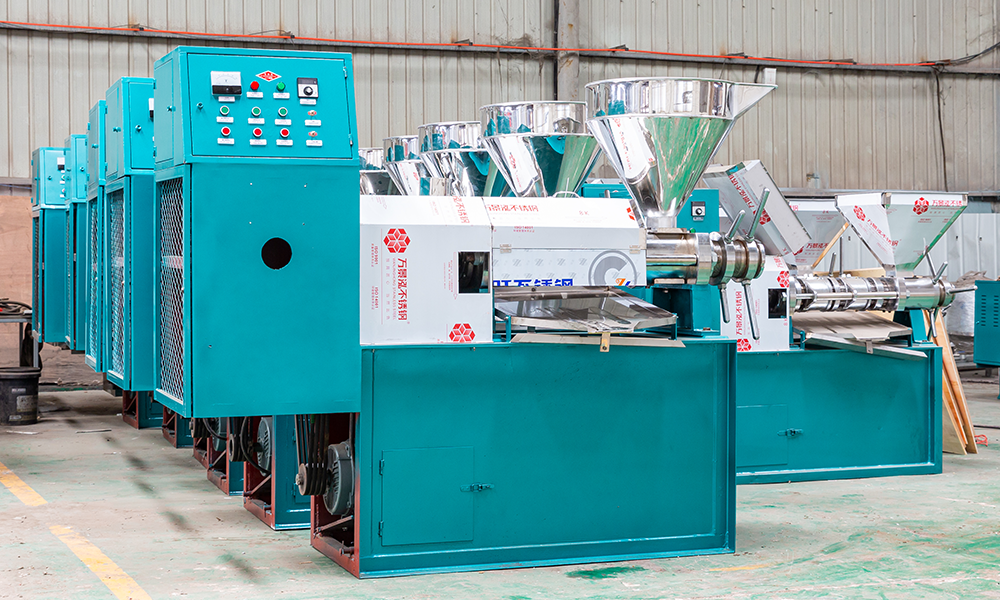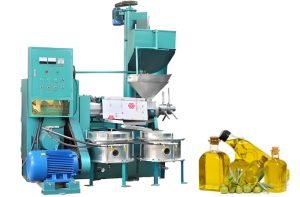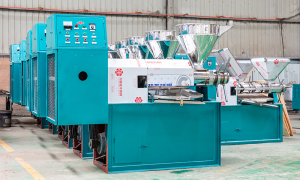How is Corn Oil Actually Produced?
Corn oil production involves sourcing corn germ (a byproduct), preparing it through cleaning, drying, crushing, flaking, and cooking, then extracting the oil using screw presses or solvent extraction, and finally refining the crude oil to remove impurities.
Understanding the journey from a corn kernel byproduct to refined cooking oil is key. Many factors influence success. Based on our decades of experience at Zhengzhou Fude Machinery, here are some crucial insights about corn oil production that can help you avoid common mistakes.
The main difficulty in corn oil production lies in obtaining high-quality corn germ consistently, as its freshness, purity, and moisture content directly impact oil yield and refining difficulty.

Corn germ itself is usually a byproduct of corn starch or ethanol plants. This means your oil mill depends heavily on these upstream suppliers. The quality of the germ they provide is paramount.
Many ventures fail because they underestimate the importance of securing a reliable source of good quality corn germ. Focusing only on the oil press machine is not enough. Building strong relationships with suppliers and implementing strict quality checks for incoming germ are essential first steps.
Dry vs. Wet Corn Germ Separation: Which Method is Right for You?
Wet-separated germ is purer and oil-rich but high in moisture, requiring immediate drying. Dry-separated germ is easier to store but has more impurities and lower oil content, impacting yield.
The method used to separate the germ from the rest of the corn kernel significantly impacts its characteristics and how you need to handle it. There is no single “best” method; the right choice depends on your specific situation.
Is Pre-treatment More Crucial than the Press for Corn Germ?
Yes, proper pre-treatment (cleaning, crushing, flaking, cooking) is arguably more critical than the press itself for efficient corn germ oil extraction due to the germ’s dense structure.
Unlike softer oilseeds, corn germ is relatively tough and compact. Simply feeding raw germ into a screw oil press results in low oil yield and high residual oil left in the cake. Effective oil release requires careful preparation.
Pressing vs. Solvent Extraction for Corn Germ: What’s the Best Approach?
For large-scale operations, pre-pressing followed by solvent extraction is the most efficient method for corn germ, minimizing residual oil. For smaller scales, optimizing high-performance screw pressing is key.
Once the corn germ is properly pre-treated, the oil needs to be separated from the solid meal. There are two primary industrial methods: mechanical pressing and solvent extraction, often used in combination.

Pre-Pressing + Solvent Extraction (The Standard)
This is the most common method globally for processing oilseeds like corn germ in medium to large plants.
- Pre-Pressing: Cooked germ is lightly pressed in a screw press to remove a significant portion (e.g., 60-70%) of the oil. This produces a “pre-press cake” with around 14-18% residual oil.
- Solvent Extraction: The pre-press cake, being porous and less oily, is then efficiently treated in a solvent extraction plant to remove the remaining oil down to <1%.
- Pros: Combines the benefits of both methods – high overall oil yield, manageable cake for extraction, more energy-efficient than full pressing to low residual oil.
- Cons: Requires investment in both pressing and extraction lines. Complexity is still significant.
Why is Refining Crude Corn Oil Absolutely Essential?
Crude corn oil requires refining to remove impurities like phospholipids, free fatty acids, pigments, and waxes, making it safe, stable, and palatable for consumers according to quality standards.
The oil obtained directly from pressing or solvent extraction is called “crude oil.” It’s generally dark, cloudy, may have off-odors or flavors, and contains several undesirable components. Selling this directly is usually not feasible for food applications. Refining is a mandatory step to transform crude oil into a marketable product.
The purpose of the crude oil refining process is to remove these impurities selectively while minimizing damage to the desirable triglycerides and antioxidants (like tocopherols).
Without refining, crude corn oil would be unsuitable for most food applications due to poor cooking performance, unpleasant taste, short shelf life, and unappealing appearance. It’s not just about aesthetics; it’s about functionality and safety.
What Makes Corn Oil Refining Unique, Especially Regarding Dewaxing?
Corn oil refining requires a specific focus on dewaxing (winterization) due to its naturally higher wax content compared to oils like soybean or rapeseed, essential for ensuring clarity at low temperatures.
While the basic principles of edible oil refining apply across different oil types, specific oils have unique characteristics that require adjustments to the process. For corn oil, the standout feature is its relatively high wax content.
Therefore, when setting up a corn oil refining line, ensuring an effective dewaxing stage is included and properly designed is critical for producing a top-quality, clear, and stable final product.

Matching the processing capacity of each piece of equipment in the corn oil production line is more important than simply having the ‘most advanced’ individual machines. Bottlenecks severely limit overall output.
Building an efficient corn oil mill plant involves integrating multiple pieces of equipment working together seamlessly. The overall performance is determined by the weakest link in the chain.
How Can You Maximize Profit from Corn Oil Byproducts?
Maximize profit by recognizing corn germ meal/cake as a high-quality animal feed ingredient, ensuring its quality during processing, and finding reliable markets for it. Other byproducts like oil foots also add value.
A common mistake in oil milling is viewing the solid residue after oil extraction – the meal (from solvent extraction) or cake (from pressing) – as a low-value waste stream. For corn germ, this byproduct is actually a significant contributor to the plant’s overall economic viability.
Don’t treat byproducts as an afterthought. Integrate their management and marketing into your business plan from the beginning. Maximizing the value extracted from every part of the corn germ is key to running a truly profitable oil processing plant.

What Should You Look for When Choosing an Equipment Supplier for Corn Oil?
Choose an equipment supplier who demonstrates deep understanding of corn oil processing specifics, offers complete solutions, has proven project experience, and provides reliable after-sales support, not just the lowest initial price.
Selecting the right partner to supply your corn oil processing machinery is as crucial as understanding the process itself. A good supplier is more than just a manufacturer; they are a technology partner. As a long-standing manufacturer at Zhengzhou Fude Machinery, we know what differentiates reliable partners.
Choosing the right supplier is an investment in the long-term success of your corn oil venture. Look beyond the initial quote and evaluate their technical capability, experience, and commitment to support.
Conclusion
Corn oil production, while detailed, is achievable with the right knowledge, proper planning, suitable equipment, and a reliable technology partner. Focus on germ quality, pre-treatment, and refining specifics.
Related recommendations
-
The purpose of spiral oil press
259Spiral oil press is a common oil pressing equipment widely used in industries such as food, chemical, and pharmaceutical
View details -
The working principle and types of oil press
531Oil press is a widely used pressing equipment with the following characteristics: simple structure, small volume, easy maintenance, diverse raw materials, high oil yield, continuous processing, short working time, and the ability to perform small-...
View details -
Introduction to multifunctional oil press
279Spiral oil press is a multifunctional equipment with the following characteristics: simple structure, small volume, easy maintenance, diverse oil pressing materials, high oil yield, large production capacity, and continuous processing.
View details -
What is the difference between a hot press oil press and a cold press oil press
480Spiral oil presses are divided into cold press spiral oil presses and hot press spiral oil presses according to the oil pressing process, which can meet the diverse needs of users. Users can choose the appropriate oil press according to their actu...
View details
 Oil Press Equipment and Oil Refining Machinery for Sale – Start Your Oil Press Business
Oil Press Equipment and Oil Refining Machinery for Sale – Start Your Oil Press Business




HelloPlease log in